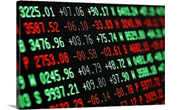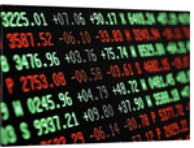
CRU: Open interest in December HR futures contract surges
CRU Principal Analyst Josh Spoores shares insight into the hot-rolled coil futures market.

CRU Principal Analyst Josh Spoores shares insight into the hot-rolled coil futures market.

While the English language is vast, there is not an endless number of ways to say, “no major changes have transpired.” And if anyone has been tasked with talking about steel price changes in physical and futures US domestic steel market over the last four months, they are probably stretching their ability to its limit.

CRU Principal Analyst Josh Spoores shares with SMU his analysis of the hot-rolled coil futures market.

It had been a relatively quiet and steady CME HRC futures market since the end of August. That was upended by Thursday’s news that instead of a two-week maintenance outage, Cleveland-Cliffs would hot idle the C-6 blast furnace at its Cleveland Works for an uncertain period of time. The CME October HRC contract, HRCV4, gained $22 per short ton (st) on the day to provisionally close at $744/st on Thursday. The first and second quarter futures strips of 2025 gained $25/st and $24/st to provisionally settle at $823/st and $829/st, respectively.

This month’s column on the markets could be a response to the question of last month, “Are the forward curve prices on Aug. 7 high enough to price in trade case risks?" The market’s answer has been a pretty resounding YES so far, I think.

On Aug. 14, the chairman of the world’s largest steel producer, China’s Baowu Steel Group, had some alarming news. He told staff at the firm’s mid-year meeting that conditions in China are like a “harsh winter” that will be “longer, colder and more difficult to endure than expected.”

The front end of CME hot-rolled (HR) coil steel futures contracts had drifted lower when this article was filed on Thursday afternoon. And the back end of 2024 had also come under pressure. Despite staging a late-month rally at the end of July back into the low $700s per short ton (st) range, the lead […]

Another month for hot-rolled (HR) coil, and another disappointing one for the bulls. They are still holding onto hope that the bottom is here and still pointing to an imminent uptick in HR prices.

Cleveland-Cliffs and Nucor each raised their respective hot-rolled coil (HRC) prices this week. Since last Wednesday’s settlement, the Midwest HRC futures curve has rallied as much as $63 in the September future.

Summer is here, and a familiar sentiment has hit the hot-rolled coil (HRC) futures market. Prices continue to decline in both the spot market and the futures market, with expectations of sub-$800 prices for the remainder of the year.

The CME steel futures complex saw a slight decrease in activity from levels seen at the end of June. This has coincided with a notable decline in flat prices for the nearby futures contract, now August HRC, which is lower by $81 per short ton (st) since last writing on June 13. It settled at $672/st on July 17.

A month ago, when we last presented this column, there was a surprising amount of optimism in the presumably imminent reversal of the downtrend in hot-rolled steel prices in the second half of this year.

This chart of the rolling second-month CME hot-rolled coil (HRC) future dating back to the start of 2022 has been as volatile as a herd of “Wild Horses.”

For the first time in weeks, activity in the futures market broke out of the recent “front grinds lower” pattern to provide new insight into the dynamics of the steel industry.

Trading activity for the CME HRC futures contract has been sporadic so far in June, with a few days seeing transacted volumes exceed 25,000 short tons (st), but overall activity remains muted. This follows a pattern that emerged over the course of May.

Let’s start by asking this: Were the proclamations that Nucor’s published index prices would drift lower with the reality of a bear market for flat rolled ultimately a bit premature with the benefit of hindsight?

Week over week, the futures curve saw minimal change.

Sideways and range-bound describes the US steel derivatives market over the past week, though the monthly picture shows a more notable decline in front-end flat prices. Week-over-week saw the June futures contract firm slightly, from $770 per short ton (st) to $780/st as of Thursday, May 23’s provisional close. However, the contract was down by […]

The last time we were together on April 18, the June hot-rolled coil (HRC) future was sitting around the $800 support level where the May future found a bottom in mid-February.

When we were asked to provide some additional commentary to SMU about the futures markets for flat rolled, our only reluctance to contribute was rooted merely in the fact that SMU (1) already offers an excellent array of authors on this topic and (2) a concern regarding what new ground could be covered that hasn’t already been discussed to death on this issue. Thankfully, however, Nucor has offered up something we can describe, without hyperbole, as simply revolutionary for spot pricing in flat rolled - a development that we simply could not resist commenting on with respect to its probable impacts on the futures market.

“One thing we know for certain, however, is that when we write our next column, things will have certainly shaken loose.” – Daniel Doderer, April 4, 2024. Above is a good reminder that whenever someone is “certain” of anything, you should probably look at that line of thinking with a healthy dose of skepticism.

Week-over-week trading activity in US steel derivatives markets was relatively muted, with prices maintaining their downward direction since the beginning of the month. Bids have materialized at the lower end of this range in the May, as the nearby backwardation continues to roll on - just as we saw with April being a premium over May.

It has been a crazy 2024 so far for hot-rolled coil (HRC) futures!!!

It has been six weeks since Flack Global Metals wrote our last SMU column, and if you simply look at the futures curve from then (blue) until now (white), you could argue that very little has changed.

Jack Marshall, a beloved member of the Crunch Risk team, has decided to retire. Jack started his career on the CME floor in 1983, working as a clerk. He then became part of the Chicago origination/trading team in forex at Bank of America, where he worked for 23 years.

2024 started with a $200 per short ton (st), one-week demon drop in the CME Midwest hot-rolled (HR) coil futures. Then, HR futures consolidated in the low $800s/st with the April future trading to as low as $770/st as the curve shifted into contango or upward sloping. A big move was expected, and a big […]

Hot rolled (HR) futures have been on a bit of a hot streak recently, while busheling futures have been more in the “not” category.

The March scrap trade is set to pick up steam next week.

Over my years of observing the steel market, there's been a recurring belief that current market disruptions in either the physical spot market or steel futures are temporary anomalies, destined to fade, and that normalcy will soon return. However, the events of the first few weeks of 2024 served as a stark reminder that this expectation seldom materializes, and that the US steel market is still the most volatile steel market in the world.

It’s no secret that HRC futures have been particularly volatile over the past several years. The most recent instance was the outsized break in the March futures contract early this week. For companies procuring raw material in anticipation of higher prices or even to get ahead on future purchase orders from customers, understanding the relative price of that raw material versus the hot-rolled coil futures curve is important.